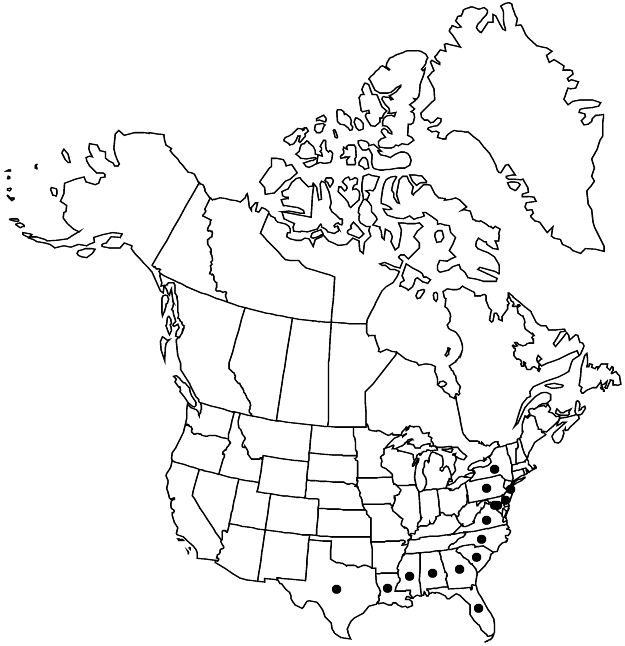Kosteletzkya pentacarpos
Fl. Ross. 1: 437. 1842.
Plants to 3 m, herbage variously pubescent, mostly sparsely to densely stellate-hairy to glabrate. Stems sparingly to freely branched. Leaves: stipules 2.5–10 mm; petiole of lower leaves 1/3–2/3 times blade; blade narrowly ovate to transversely ovate, often palmately or hastately 3(–5)-lobed, 5.5–17.5 × 3.5–16 cm, margins coarsely to finely serrate or irregularly dentate or ± entire, apex acute to acuminate. Inflorescences solitary flowers in axils of upper leaves or axillary on lateral branches. Pedicels exceeding petiole but not blade; involucellar bractlets 8–10, linear to subulate, 4–10 mm. Flowers: calyx divided for ca. 3/4 its length, campanulate to rotate, 7–11 mm; corolla rotate, becoming funnelform-campanulate as day progresses, petals usually pink, rarely white, yellow at base, asymmetrically obovate, 15–45 × 10–40 mm; staminal column ± declinate, yellow, 15–35 mm, bearing filaments nearly to base; filaments mostly 1–2.5 mm; anthers subsessile, yellow; pollen yellow; styles deep pink, 2.5–9 mm; stigmas deep pink. Capsules dark brown, 10–14 mm diam., minutely to coarsely hairy, valve margins strongly curved in outline. Seeds brown with paler concentric lines, 3–4 mm, glabrous. 2n = 38 (as K. virginica).
Phenology: Flowering late summer, sometimes winter–spring in Florida.
Habitat: Coastal brackish and fresh marshes
Elevation: 0–20 m
Distribution

Ala., Del., D.C., Fla., Ga., La., Md., Miss., N.J., N.Y., N.C., Pa., S.C., Tex., Va., West Indies (w Cuba), Bermuda, Eurasia (e Azerbaijan, Balearic Islands, Corsica, w Georgia, n Iran, n Italy, sw Russia, s Spain).
Discussion
Kosteletzkya pentacarpos has been known widely in the United States as K. virginica; the Eurasian K. pentacarpos is virtually indistinguishable from our northeastern plants (O. J. Blanchard 2008). The two basionyms were published simultaneously by Linnaeus; A. J. Cavanilles ([1785]–1790, diss. 3) was the first to unite them, and his choice of the epithet pentacarpos must be followed.
A chromosome number of 2n = 34, at variance with that accepted here, has been reported for Kosteletzkya pentacarpos (N. Tornadore et al. 2000); it is probably an error (O. J. Blanchard 2012).
Kosteletzkya pentacarpos is variable, and this is reflected in the number of infraspecific names that have appeared. S. N. Alexander et al. (2012) examined the named variants and concluded that only a narrow-leaved extreme from southern Florida should be retained: K. pentacarpos var. smilacifolia. White-flowered plants are found occasionally.
Selected References
None.